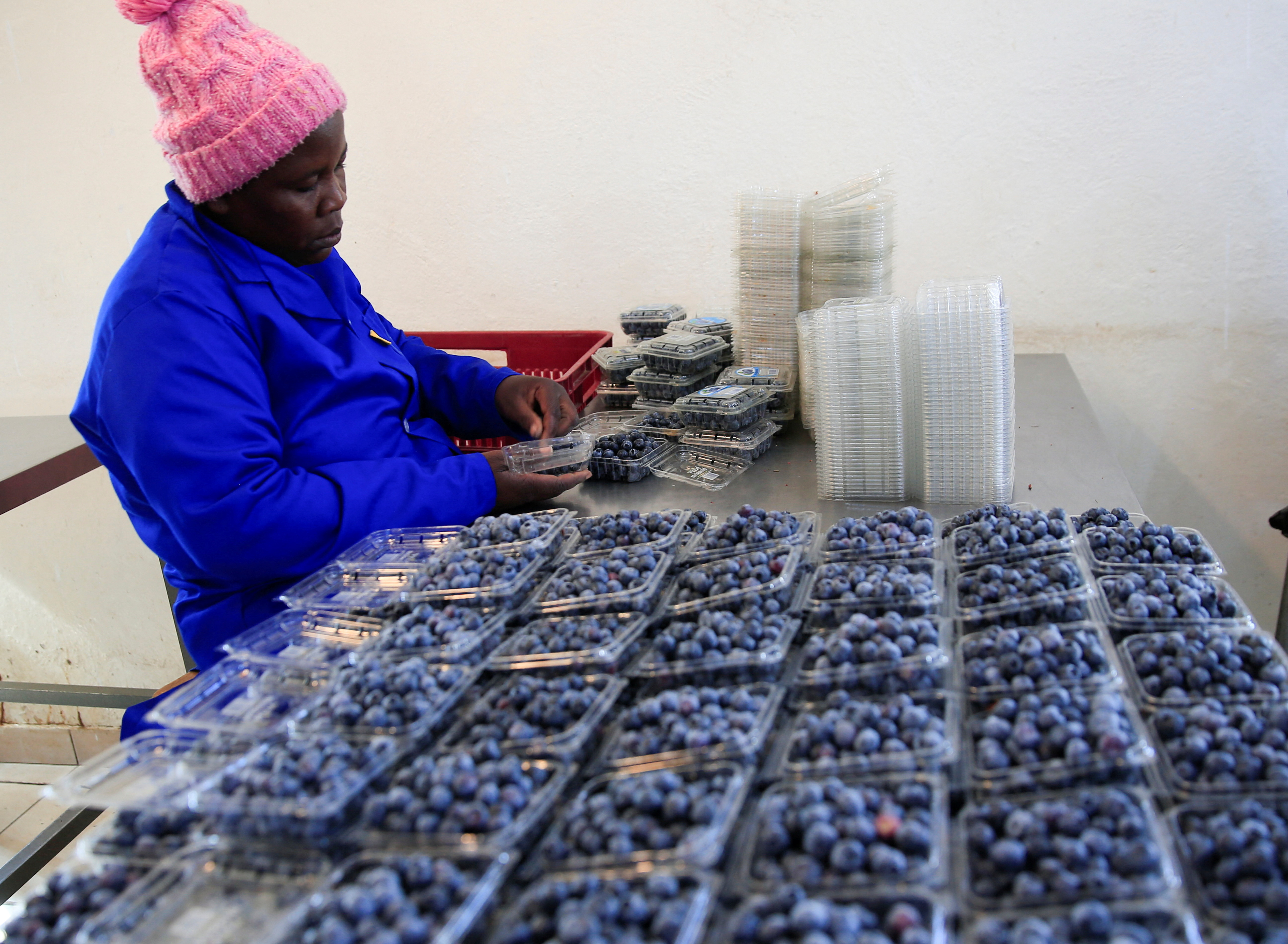
Farmers in Zimbabwe who grow blueberries are facing financial difficulties as they try to meet the increasing demand
Farmers in Zimbabwe want to profit from the growing demand for blueberries around the world, but Willard Zireva and other self-funded producers say that limited government assistance and a shortage of funding are obstacles.
Due to a favorable climate, Zimbabwean blueberry growers doubled their output to 7,000 metric tons last year, making them one of the fastest growing producers in the world. However, farmers in Zimbabwe are having difficulty obtaining funding for their businesses.
Zimbabwe exports more than $100 million worth of horticulture products every year, largely due to blueberries. When former President Robert Mugabe started seizing farms held by White people in order to resettle Black compatriots who were landless, the sector’s exports, which peaked at $140 million in 1999, were disrupted.
Due to ambiguous land tenure, banks are still hesitant to finance agriculture, despite the sector’s recent expansion, which makes it difficult for Black farmers like Zireva to flourish.
The few surviving white local farmers in Zimbabwe today dominate the blueberry farming industry, and many of them are seeking foreign investment to grow their businesses.
The 99-year leases that the government gives to farmers who have been resettled are not accepted by Zimbabwe’s banks as security for loans.
The state has already seized farms arbitrarily, including from some Black commercial farmers, which makes banks hesitant to lend to farmers.
At his property in Talana, 100 kilometers (62 miles) west of Harare, the capital, Zireva grows 12 hectares of blueberries. He purchased the farm freehold in the 1990s, prior to the land grabs.
He claimed that after a local bank turned down his finance application, he was forced to grow his first crop using just his own resources.
He told Reuters, “There is a massive growth opportunity if funding is available.”
In Zimbabwe, planting a hectare of blueberries costs at least $100,000 since you need to bring in plants, peat pots from Europe, and certain crop shades.
Water resources and refrigerated packaging warehouses are additional expenses.
“The government must make the interventions that we require. Nobody else “, Zireva remarked, alluding to farmers’ concessional funding.
Requests for response were not immediately answered by the Bankers Association of Zimbabwe (BAZ), the finance ministry, or the agriculture ministry.
This year, Zireva’s farm hopes to ship 120 metric tons of blueberries to East Asia and the United Kingdom, but he notes that demand is far higher than supply.
He said that in order to double output, his farm needs $1.2 million.
“We are hoping that we can get funding next year to put in eight hectares so that we get to 20 (hectares),” Zireva added.
According to Zimbabwe’s Horticultural Development Council (HDC), a major obstacle to the industry’s ambitions to treble blueberry hectareage to 1,500 hectares by 2030 is the absence of long-term financing.
Without funding, “we will see growth in the blueberries sector coming off on the tonnage side,” HDC CEO Linda Nielsen told Reuters. We have to increase the hectareage and hold onto our market share.
All Categories
Recent Posts
Tags
+13162306000
zoneyetu@yahoo.com



